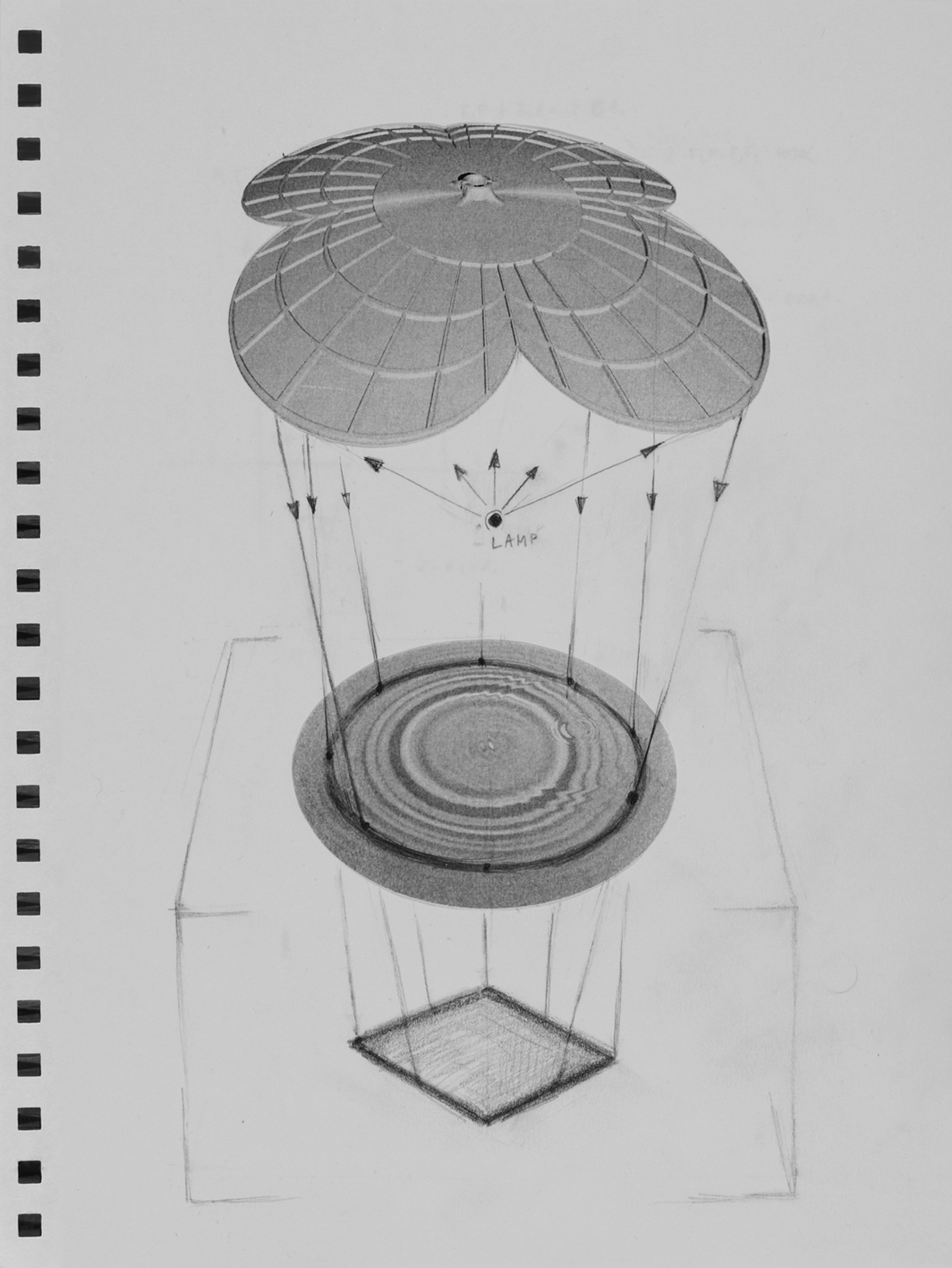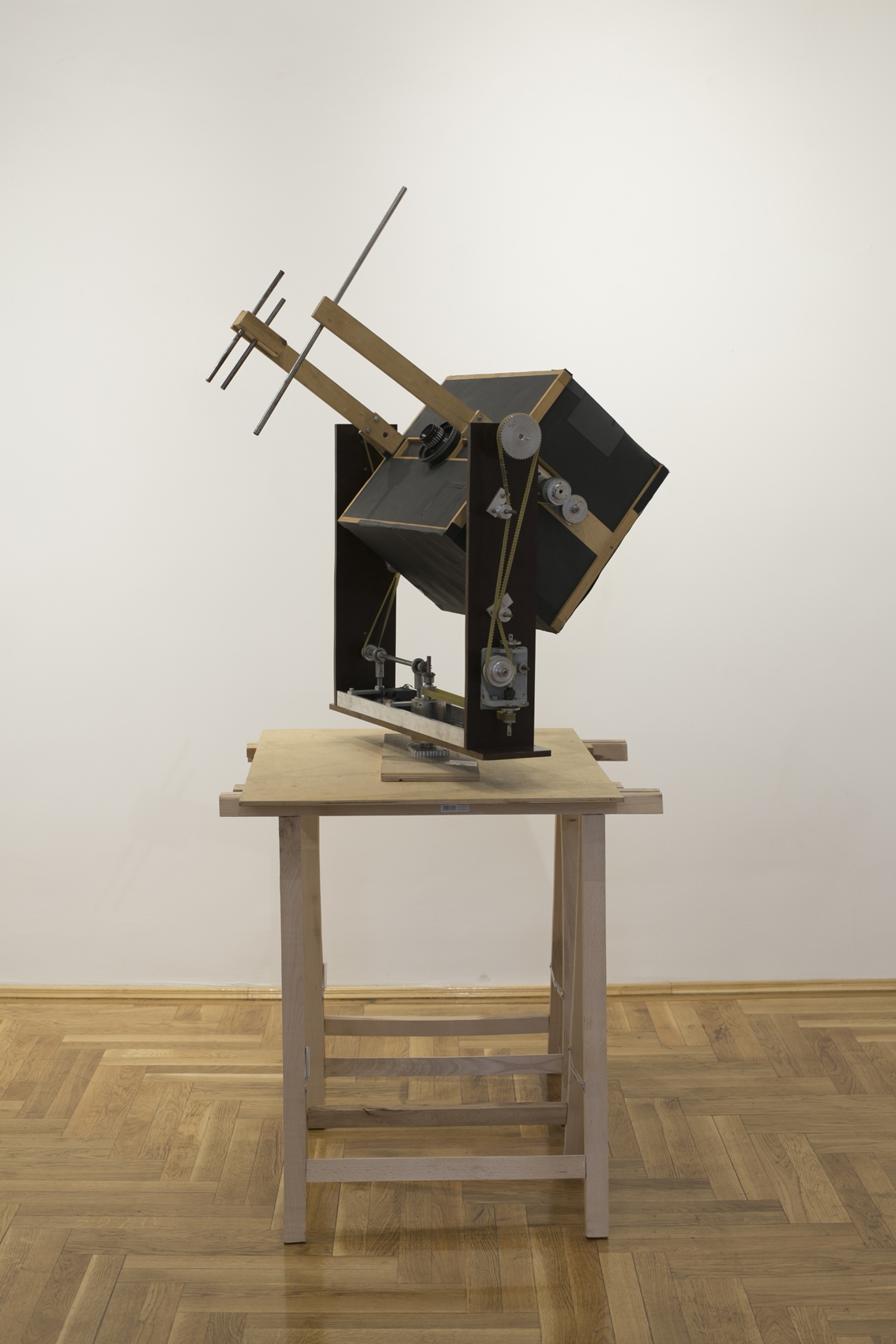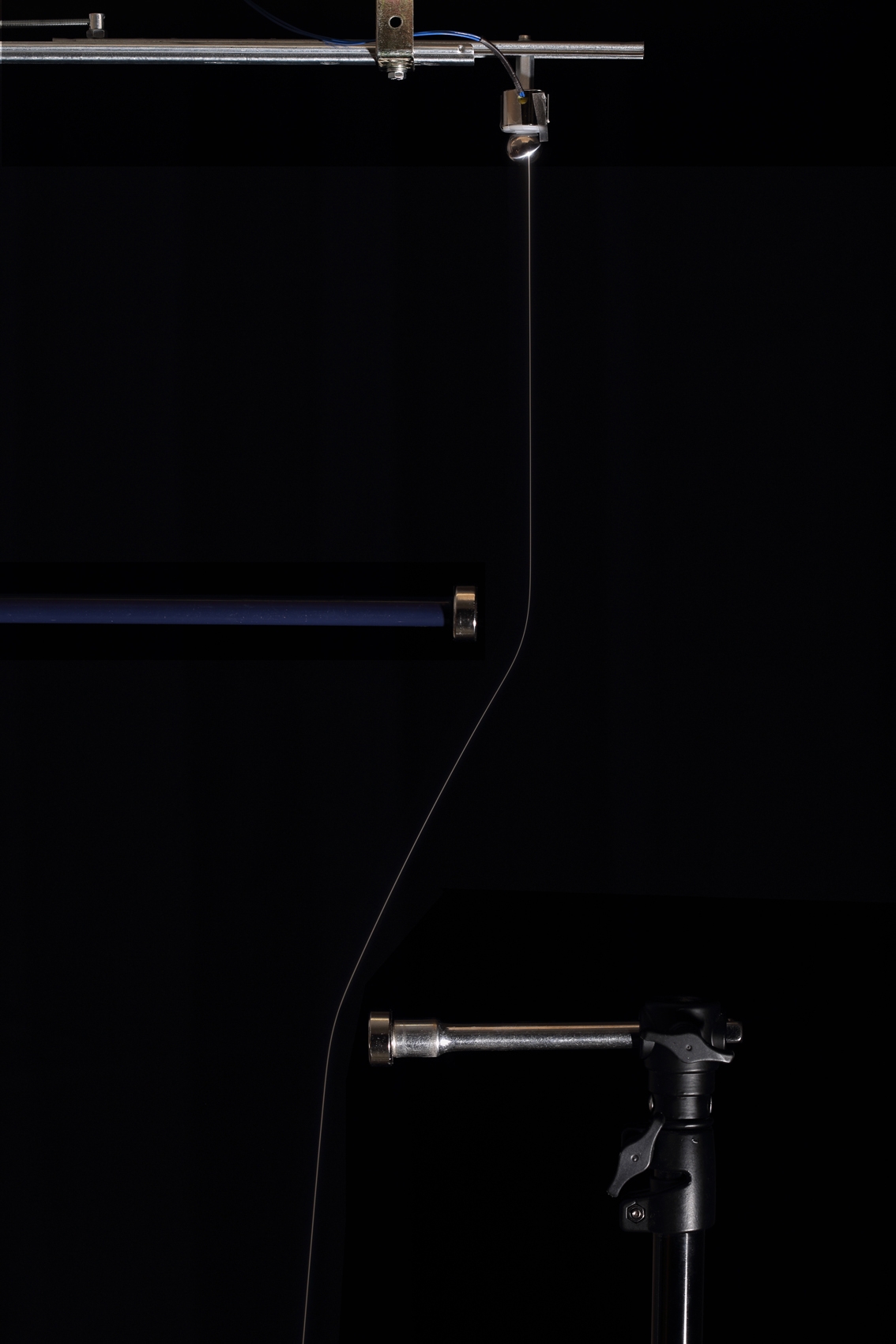
Adam Przywara: Back in early days you studied painting and more classical mediums of art. How did you become interested in working between science and technology? How did the form of a machine become important for your practice?
Attila Csörgő: Originally, as a young man in the middle of the 80s, I wanted to be a painter. I do think it was connected to the certain imagination I had about what it meant to be an artist. I had a strong impression of an artist as this bohemian figure, like the one we know from the Parisian streets of the interwar period. This was for me of course a certain symbol for a freedom and “other” life. Anyway, the 80s were strongly dominated by painting as an artistic practice. It was this trans-avant-garde period with groups and artists like German Neue Wilde group and their Neo Fauvist paintings. So at this first stage, I was influenced by this moment and started with painting.
The technological interest came later?
In the middle of my studies, during my 4th year my interest in painting disappeared. I tried to re-orientate towards something new like installation art and other disciplines. I remember I visited Munich then and saw the show of Arte Povera there. It made quite a big impact on me. I thought back then that the problems of space are becoming a challenge for me, which now form a crucial point for my practice. At this time, I also cultivated an interest in studying Russian and the Soviet avant-garde, looking at projects such as Vladimir Tatlin’s Counter-reliefs for inspiration. As a three-dimensional entity, they were moving beyond what I then understood as sculpture. You couldn’t walk around them, tough they couldn’t be understood as paintings or drawings, either. They were somewhere between space and plane: situated in a fractional dimension
These encounters reoriented my own practice and at the same time I realised I had a talent for geometry. In art school, we had some background in geometry,known as the toughest and hardest course to pass. But I always managed to have good marks and pass quickly [laughs].


So other pupils from the school were sticking to the classic methods of art? Or was there a certain group of you with common interests?
Generally, the school was old fashioned with a very traditional approach to the separation of art disciplines. Actually, the sculpture department was the worst of them. On the painting and graphic courses you could have some freedom to experiment. But you had to understand that it wasn’t really possible to fully realize projects that were involving with machines — there was a lack of finance and infrastructure. Of course, we knew works by Hungarian-born artist Nicolas Schöffer, we were all deeply interested back then about kinetic art. But for us, it was still too distant, the perfectly made forms were totally inconceivable from a student’s perspective.
When I started working with my first motion experiment, I had to rely only on the object I had in the studio.
But then somehow it was a starting point for your experiments with technology?
Yes, slowly I was able to begin with my first installations despite my lack of financial means and production quality.When I started working with my first motion experiment, I had to rely only on the object I had in the studio. So a cheap record player became the source of my slow motion and an electric fan of a fast rotation. I was concerning myself much more with the modulation of existing objects and mechanical systems.
This aspect of reusing rather than producing is still visible in your work.
Yes it is. On the one hand it has been a playful activity, and on the other this enables my works to have a different character also in the relation to the audience. Essentially it makes the work more intimate, important in a general technological context. Industrially produced objects, machines and systems are opposite of that, they are unapproachable. The more perfect the machine is, the less it becomes approachable for the human subject. However you have to remember that it is now even more complex as we live in the digital era. By observing certain analogue machines, we can understand after a while how they operate. With digital it is impossible, as the machine work becomes invisible, transformed into lines of code. But there is still possibility to work through this enigmatic environment.
Not the most popular thing to do at the time.
True, there were only very small groups of artists working in this field, you could not even characterise it as a group, formal investigations far from mainstream practice, partly because they can cause horrible problems.
Such as?
Imagine that opening of your exhibition is approaching quickly and the work is literally not working. These are situations which everyone wants to avoid but in practice related to mechanics, it happens more often and causes more problems. Especially in the early times and the lack of technological support — these artworks were always risky objects.
It might be interesting to dwell on this a second and ask ourselves — how is it that the object of use, the mechanical object, which performs an action to become an object of art, how does it act and function aesthetically?
Yes, there are several contradictions or rather tensions in these kinds of objects. They become obvious when art objects of this sort are looked at by, for example, engineers. The first thing they will obviously say is that this is an object which is poorly constructed. In another scenario, an artist of more classical sort will look at it and state that its aesthetic or artistic value is quite low. It is, of course, related to the fact that these machines “do” certain things. So the moment of reception is much less definite than when your are looking at a static painting or sculpture. And it is visible when a a mobile construction fails to work and everyone looks at it as a basic object rather than anything else. The aesthetic, or artistic will, is situated in the mechanical process itself.


So it is a fragile position in which you stand?
I guess so. It is much easier to hide certain shortcomings in a painting, than in a machine, which just stops working. At this point we can analyze what did happen. Something accidental or inevitable? Technical or conceptual? And so on. However, it is important to put into perspective the whole artistic process. The whole conceptual process and studies form the backbone of such machines. This is possible to appreciate even if the machine itself stops to work. The documentation of its outcomes and the whole conceptual process can become an artistic object itself. But let’s say that it is the best when the machine works!
My project at the Documenta 13, Squaring the circle, has a story similar to the aforementioned troubles. Okey, it is not a moving construction, rather an optical machine. I had to give up the initial idea because it was unfeasible. After that I focused on the realisation of the ’emergency plan’ but the result was quite poor because of some minor design and many technical problems. That was on display in Kassel. Today I consider it as a sketch because later I started the process again with better calculations and much better materials, and could manage it.
It is much easier to hide certain shortcomings in a painting, than in a machine, which just stops working.
Working on complex machines are certainly the domain of scientists, but you are not claiming to be one, however, would you classify your interest in mechanics as a “hard science”?
After the political changes in Hungary and the fall of communism, I finished my art studies in a new department called Intermedia Studies. We studied subjects of film and photography, but there was also this crucial course on projective geometry. The teacher who was lecturing on this complicated subject was able to present it in a way accessible to us. This made all the difference. It is interesting how the visual demonstration of a certain geometrical or physical law changes their perception in our brain.



So there was a need for synthesizing art and science? Some kind of mediation between the laboratory and the world, or even just a conversation?
About 3 years ago I collaborated with a French physicist in Laboratoire Astroparticule et Cosmologie (APC) in Paris. This was very interesting experience, because I observed several similarities between the work of the scientist and the artist. For example, every project started from an initial idea, a vision of what we would like to realise. On this point we don’t know if it was even feasible or not.. After a certain time of researching the problem, going around it, we found that you can decide if you want to pursue it or drop it. The last element is, however, different and it relates to freedom. As an artist, to some higher extent, one can do alone what is conceived in one’s mind. Scientists have to apply for funding and the money has a definitive aspect, if the project gets funding it becomes realised. There is an evaluation method considering the feasibility of the project. If a project becomes low score they don’t get any money. On the one hand, it is reasonable because the researches are very expensive, on the other hand it cuts back the creativity and fantasy.
How close was your working relationship to the scientists there?
I was able to spend time with them and talk. I spent two weeks in the institute where I had a desk and everything. I was able to talk and consult people there. But on the practical level, on the level of production there was no possibility to collaborate as they had their own activities, they were working on their projects. Everybody was busy with some other deadlines and the sophisticated machines that were accessible in the institute couldn’t be used for the same reasons.
Tell us what to expect at your forthcoming exhibition at Glassyard Gallery in your hometown of Budapest.
The exhibition will show my old works and one new work. All together four works contained in four rooms of the gallery space. There will be a next edition of the Squering the circle project. Then there will be a similar work to the one I showed in Warsaw in the “As You Can See” exhibition titled Clock-work, which was also shown during the Venice Biennale last year. My third project consists of a work called Orange Space which actually originates from the question of how we can photograph almost the entire 360 degree space around us. I constructed a photo camera which moves during the process of exposure and in a slow manner captures its whole surroundings. It takes about 40 minutes to take one photograph with it. The photographic paper used inside it is in a form that originates from an orange peel, which can transform from a three dimensional sphere to an almost flat surface. Incorporated into the work is a transformation from a three-dimensional entity to a planar entity. In the gallery space I will also show the camera itself as it is an important part of these images.


And the fourth work? The new photographic work?
Yes. What you see on these images are photographs of trajectories that were captured during the free fall of a metallic ball. I constructed a simple discharger of metallic balls and photographed their fall with proper lightening. Subsequently, I started to change their trajectories during free fall by adding obstacles to their path, by adding obstacles to their path. In one experiment I used strong magnets for making the falling balls deviated. In the other one the balls hit objects like hammer, saw, than bounce back and collide. That way quite complicated trajectories, let say ‘stories’ occured. What you see on the photographs presented on the exhibition is a glimpse of light reflecting in the metallic ball and captured by the lens. This process is taken to the point in which the ball itself disappears from the image and only the trajectory remains. You can relate it to the first experiments with photography and movement, like Eadweard Muybridge, but even more importantly Etienne-Jules Marey who tended to mark certain points on a moving body or objects, retracing their trajectory on the photographic image.
Imprint
| Artist | Attila Csörgő |
| Index | Adam Przywara Attila Csörgő Glassyard Gallery |
